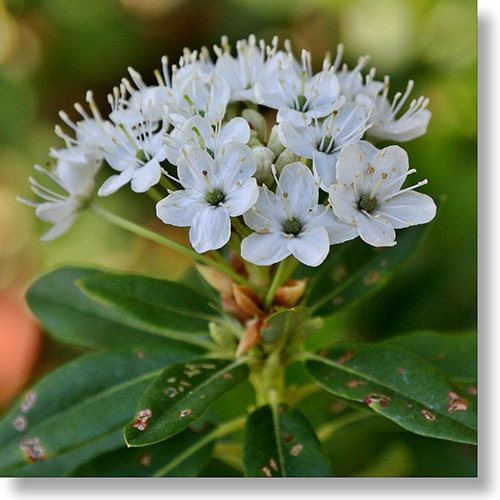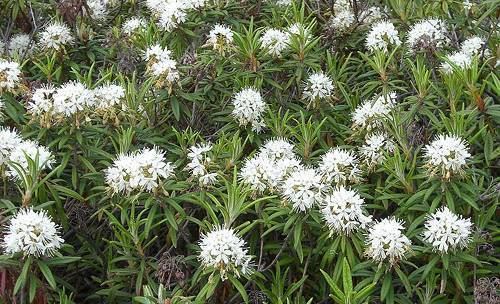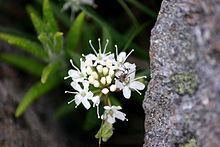 | ||
Similar Water, Gruit, Empetrum, Salmonberry, Thimbleberry | ||
Wild edibles labrador tea
Labrador tea is a common name for the three closely related plant species and the name of an herbal tea made from the plants:
Contents
- Wild edibles labrador tea
- Elder bertha skye talks about labrador tea
- Description about the plant
- Uses
- Toxicology
- Harvesting
- References

All three species are primarily wetland plants in the heath family. The herbal tea has been a favorite beverage among Athabaskan and Inuit people.

Elder bertha skye talks about labrador tea
Description about the plant
All three species used to make Labrador tea are low, slow-growing shrubs with evergreen leaves:

The leaves are smooth on top with often wrinkled edges, and fuzzy white to red-brown underneath.
R. tomentosum, R. groenlandicum, and R. neoglandulosum can be found in wetlands and peat bogs.
Uses
The Athabaskans brew the leaves as a beverage. Others use Labrador tea to spice meat by boiling the leaves and branches in water and then soaking the meat in the decoction. The Pomo, Kashaya, Tolowa and Yurok of Northern California boiled the leaves of Western Labrador Tea similarly, to make a medicinal herbal tea.
During the 18th century, German brewers used R. tomentosum while brewing beer to make it more intoxicating, but became forbidden because it led to increased aggression.
Toxicology
There is no sufficient data that demonstrates Labrador tea is safe to consume as toxicity varies across species and localities. Excessive consumption is not recommended due to diuresis, vomiting, dizziness, and drowsiness. Large doses can lead to cramps convulsions, paralysis, and in rare cases death.
Toxicity occurs due to terpenoid ledol found in all Labrador tea species. R. groenlandicum has the lowest toxicity due to lower levels of ledol. Grayanotoxins are also present, but few lethal human cases of poisoning due to grayanotoxins in Labrador tea have been documented. However, lethal poisonings have been documented in livestock.
Harvesting
Labrador tea is slow growing, so new single leaves are collected in spring from multiple plants to avoid damaging individual plants every other year.
